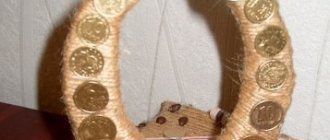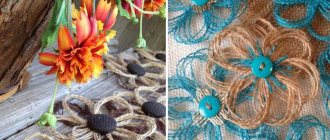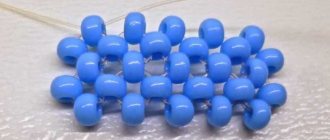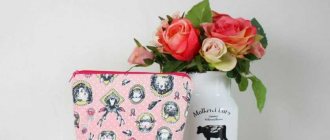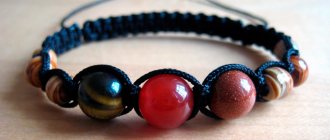It’s the 21st century, but many needlewomen preferred to choose an interesting Old Slavic craft as a hobby – felting. Having mastered the felting technique, you can easily create wonderful cozy toys and souvenirs, clothes and shoes, beads and other unusual and individual things. That’s why this activity is gaining more and more fans. However, this rare craft cannot be done without special tools. Likewise, special needles are used to create felt products. In this article we will tell you in detail which needle is intended for what, how to choose the right needle, whether it is possible to make a felting needle with your own hands and a lot of other useful information.
Essentially, felting needles look like an iron stick or knitting needle, the end of which is covered with teeth to capture the pile. The point of the needle easily enters the wool ball, catches the thread and, pulling it out, inserts it into the other end of the ball. Thus, the lump is given elasticity and shape. Let's look at the information for beginners about which needle is what.
Do-it-yourself felting needle - useful information for beginning needlewomen
Felting wool requires special tools. This is one of the few types of needlework that requires special tools. You can make some tools yourself, but this is a very small part. The information for novice needlewomen presented in this article regarding all kinds of needles will be very useful, since before starting work, you need to carefully study the features and subtleties. Can a felting needle be made quickly and easily with your own hands? We will try to answer this question in this article.
A felting needle is a thin stick with a serrated edge. It is precisely due to the fact that the jagged edges catch the wool pile when punctured, the reverse movement of this device makes it possible to knock the pile together more tightly, and subsequently form a tight lump. In fact, this is the principle of working with these needles.
What kind of needle can be used for felting (photo of options)
Similar articles
- Do-it-yourself wooden countertop for the kitchen: wood look, how to make it from solid wood, reviews, video instructions, photos
A wooden tabletop will make the kitchen interior cozier and warmer. Why make a table with your own hands, when you can buy it in a store? There is an answer to this question... - DIY waterfall in the country + photo
When the word dacha is mentioned, many people shudder. I immediately remember kilometers of unplowed beds, tons of fierce mosquitoes, and weekends spent in hellish and... - How to arrange the inside of a garage with your own hands + photo
Today we will discuss a very broad topic: how to arrange the inside of a garage with your own hands? Many car enthusiasts think about this question, because...
How to make your own felting needle
It will be useful for beginning needlewomen to know which needles are used for dry and wet felting.
The presented markings correspond to foreign needles, but the Russian markings are different:
Unfortunately, it is almost impossible to make needles for felting. But it can be repaired. For example, you don’t have to be a professional or have any special skills to repair a felting needle. It’s very easy to turn an inconvenient tool into a comfortable one with a handle. For these purposes, a regular ballpoint pen, the top of which can be unscrewed, along with foam rubber and hot glue are quite suitable.
In order to repair a felting needle, you must follow the successive steps of work:
With such a modernized tool, the felting process will become even more enjoyable and interesting. And for beginning needlewomen, the work process will also be significantly simplified.
Needles for dry felting.
A needle for dry felting is shown in the photo. Dry felting needles vary greatly in shape and size. In accordance with the thickness of the needle, they are indicated by numbers. Needles range from 0.5 mm to 1 mm. The designation of their sizes is very similar to the designation of crochet hooks or knitting needles.
Reverse felting needle requires detailed consideration. It is not used for main work, but it is ideal for creating light fluffiness on the surface of products. With this needle you can easily make animal fur, hair or fluff on flowers and fruits. The principle of its operation is that it not only dumps the pile, but also pulls it out a little during the return movement.
Size No. 32 - thick reverse needle for felting dense wool or pulling out large tufts of fibers;
Size No. 40 - fine reverse needle to create a little fluffiness.
Beginning needlewomen should take into account that if they are going to engage in felting wool for a long time, then it is better to buy needles of recommended quality.
What is felting wool?
Wool for felting is taken only from animal origin. Artificial material does not give the desired results due to differences in the structure of the fibers. But even natural wool has significant differences between subspecies and each individual type cannot be used for every craft.
Production
Wool for felting is produced in various countries. It is distinguished by quality, color, and thickness of the fibers. The most valuable is the super-thin material, which is produced in England, Italy, New Zealand, and Germany. This is merino carded, from which thin scarves, clothing and other items are created. It is not prickly and quite gentle.
How to choose
It’s easy to choose wool for felting, but when purchasing, you need to clarify that it will be suitable for a specific type of needlework. There are varieties that are not suitable for felting and are used for spinning. They do not form felts during processing and remain skeins, regardless of the type of impact.
For dry
Thin, semi-fine types of Trinity wool are produced in Russia. It is found often, has a huge number of shades and is inexpensive. It falls off easily and quickly, but has a lot of hard hairs that have to be pulled out. It is not suitable for wet felting. Another significant disadvantage is that the material often sheds.
The composition often contains hard hairs that may need to be combed out.
In general, carding is good for dry felting. It lends itself well to felting, quickly forms felts and does not require prolonged exposure.
For wet
Thick Peruvian wool is absolutely not suitable for wet felting; it is better to use thin and superfine wool. It allows you to create thin and soft products that do not prick. The best wool is made in Italy. Merino carded, brought from this country, is most valued by needlewomen, although it requires more careful handling.
Kinds
There are different types of felting material. They can be represented by the manufacturing method, shades, the presence of hard hairs, and so on. It is worth choosing a specific option based on your final goals.
Leonardo
Leonardo is an Italian wool that is valued by needlewomen. Excellent for wet felting. It is used to create clothes, scarves and much more. A distinctive feature is that things made from such material are practically not scratchy. But it is worth considering that such fiber is quite expensive.
Carded
Cuardoches are excellent for dry felting. It falls quickly, and the hairs themselves are quite strong and durable. There is no need to tear them apart during the manufacturing process. This material is also called wool wool. That is, this is wool that has been passed through a carding machine with hard card brushes. Outwardly, it resembles cotton wool, and the fibers in it are multidirectional.
There is a thin and semi-thin option. Supplied from domestic manufacturers, as well as from Latvia, Estonia, Bulgaria.
Suitable for making paintings, handbags, slippers, hats and other products.
White
White wool or Corriedale is the second most important wool in felting after merino. Its main distinguishing feature is its pure white color and bright shine. It is excellent for dry felting. It has a small thickness and a high degree of elasticity. If it is used in wet felting, it is usually mixed with Merino. This type of wool will make the craft heavier and denser. It is important to note that it is a little prickly.
Kyrgyz
Kyrgyz wool for felting is a fairly strong and elastic material, from which handbags and slippers are also made. Toys. It is excellent for dry felting, and products made from it are especially wear-resistant. It is not so good for making clothes, as it can be very scratchy due to the presence of hard fibers. Has a rich color palette.
Italian
Italian wool is one of those that is valued the most. It is distinguished by its luxurious quality, as well as its softness and tenderness. One drawback is that its cost is slightly higher than that of analogues from the CIS.
It has a slight sheen and is well suited for dry and wet felting.
Felting for beginners. What are felting needles for?
Let's talk about felting needles.
If you, like me, love felting wool, then sooner or later you will be faced with the question of what needles are needed for and how they are used for felting.
I think you know why and how wool fibers adhere to each other. Under a microscope, it can be seen that there are scales on the surface of the hair that become entangled during the felting process, catching on each other.
The result is a more or less dense canvas or three-dimensional product, for example a wool toy or an interior sculpture.
According to the method of connecting these scales to each other, felting is divided into wet and dry. For wet felting, soap and water are used. And for dry - special needles, which confuse these same scales with each other.
Needles are classified into straight and reverse, according to the shape of the serrations, and are also numbered. The higher the number, the thinner and shorter the felting needle
Straight needles are used for felting and tangling fibers. When felting toys or sculptural objects, the felting process begins with the coarsest, thickest needles, for example No. 25. The denser the workpiece becomes, the more often the needles are changed to thinner ones. The final grinding of the surface of the finished work is carried out with the thinnest needles, for example No. 50.
But if you are just at the beginning of mastering this skill, and you have not yet conquered all the wonders of wool, do not be discouraged if you do not have the full range of needles.
I felt my wool flowers only using size 38 needles.
According to their shape, the needles are divided into triangular and star-shaped. Below you see examples of cross-sections of needles.
Defects when felting wool
Despite all efforts, it happens that felting does not bring the desired results. In this case, there may be certain mistakes made by the craftsmen or poor quality material for the work.
Why isn't it lying around?
Quite often, craftswomen are faced with the fact that no matter how much you felt, three or three times, vibrate the fabric with the machine, the wool will not fall off. There may be several reasons for this:
- unsuitable breed of sheep that produced the sheep's wool;
- special means used to treat the mass;
- wrong choice of material.
The latter is very important, because some types of fibers are used exclusively for spinning, and therefore simply cannot be felted. Therefore, when purchasing, it is very important to clarify this point. Find out about the composition and description of Dior fabric at this link.
Wool matted after washing: how to fix it
This kind of trouble also happens, especially if you do not follow the rules of care and washing. You can get rid of shrinkage by:
- Daily soaking of the item in water, alcohol and ammonia. Add a little shampoo to 10 liters of water, 2 tbsp. ammonia and 1 tbsp. alcohol Keep it for a day. Then stretch the item diagonally, and then in width and length.
- Simply soak the item in hot water. Let it cool a little until warm, periodically stretching it according to the previous method and repeat until the water has cooled completely.
- You can eliminate shrinkage in the water with which the beans were previously soaked. Heat it until hot, place a sweater there and proceed according to the previous method.
- Soaking in cold milk gives excellent results that return things to their original appearance. It costs about 4 hours to keep the item in it. Then rinse and stretch.
When drying things on a horizontal surface, you also need to slightly stretch them along the diagonals, length and width. This will prevent her from sitting down again. Read about pleated fabric here.
Shrinkage during wet felting of wool
Shrinkage may also occur when wool is felted wet. This is fine. In many ways, incorrect calculation and choice of material play a role here. 30% is the average minimum figure. In fact, to get the same 1x1m fabric, you need to lay out 143 cm of wool. That is, approximately the volume is calculated as follows: 143-143x30%=100. This article will tell you about the characteristics of the moleskin material.
In this technique, it is permissible to reduce the volume of the product by 30-49%.
What to replace a needle for felting wool with
Felting is a hobby with which you can make a huge number of different things. This is not a very complicated process that can be easily learned even if you have never done anything like this before. There are two types of felting: wet and dry. In order to do the job correctly, you will need a special needle, which can be purchased at any specialty store.
But what if you need to make a product now? How can I replace a felting needle and how does it differ from other sewing accessories of this type? You will learn about all this in this article.
Needle for felting wool - features and purpose
A new needle may be needed because the previous one is broken.
Unfortunately, this happens quite often for beginners, and buying new sets every time can be problematic for financial reasons. What to do in this case? First, let's figure out why ordinary needles are not suitable for felting. The fact is that they are more reminiscent of knitting needles than the small sewing needles we are used to. At the end of such devices there are special teeth, with the help of which the felt is grabbed. Thus, the whole process occurs - one piece of wool is captured by a needle and transferred to another place. This is how the shape is formed, and the product also has the required volume.
That's why felt products are so beautiful and pleasant to the touch.
Reference! There are several types of felting needles, each with a different purpose. That is why it is not very advisable to buy a new whole set because one needle breaks.
For example, the thickest devices are used exclusively in the first stages of work, while medium models can be used from the beginning to the end of felting.
How to replace a needle for felting wool
Replacing a needle specially designed for this process can be quite problematic.
You can try to take a crochet hook if it has characteristic notches and try to start working. But not every hook will work, so you'll have to use trial and error. In addition, there are special felting machines into which replaceable attachments are inserted. Making them for such a device is quite simple:
Machines into which needles are inserted allow you to complete the felting process much faster and with better quality. You no longer have to stand for a long time and poke at wool to get a beautiful product as a result. But some craftswomen still prefer to do all the work with their own hands from start to finish - they believe that this is precisely the meaning and pleasure of making this or that thing on their own.
Now you know how a felting needle differs from other sewing tools. The characteristic notches make it an indispensable attribute of this process, without which felting wool simply will not work. But if you choose the right tool or make it yourself, then in the end you will get a magnificent felt product. In addition, there are “reverse” needles, with which you can achieve incredible softness of a toy or craft. This way they turn out even fluffier.
Felting is a useful and interesting activity that will bring pleasure not only to you, but also to everyone who sees or even receives your amazing creations as a gift, because beautiful animals or figures obtained from a simple piece of wool are a real miracle!
Source
DIY felting needle: information for beginners with photos
It’s the 21st century, but many needlewomen preferred to choose an interesting Old Slavic craft as a hobby – felting. Having mastered the felting technique, you can easily create wonderful cozy toys and souvenirs, clothes and shoes, beads and other unusual and individual things. That’s why this activity is gaining more and more fans. However, this rare craft cannot be done without special tools. Likewise, special needles are used to create felt products. In this article we will tell you in detail which needle is intended for what, how to choose the right needle, whether it is possible to make a felting needle with your own hands and a lot of other useful information.
Essentially, felting needles look like an iron stick or knitting needle, the end of which is covered with teeth to capture the pile. The point of the needle easily enters the wool ball, catches the thread and, pulling it out, inserts it into the other end of the ball. Thus, the lump is given elasticity and shape. Let's look at the information for beginners about which needle is what.
Triangular option
Triangular needles are used in the first stages of work. They have a simple shape, making it easy to pierce felt. The triangular needles vary in thickness, but each has a jagged, sharp tip.
The thickest triangular needles are used only at the very beginning of the process.
With a medium-diameter needle you can work from the first to the last stage.
Small triangular needles are intended for “jewelry” finishing of the product.
Triangular twisted
The twisted triangular needle differs from the usual spiral-shaped working side. This needle is used for felting wool at the very end, because it leaves very small, unnoticeable holes.
Reverse
A reverse triangular needle is used to pull small hairs out of the product and form a soft pile. Thanks to the reverse teeth, you can easily catch the right amount of wool without damaging the structure of the toy or decoration.
Main types of felting tools
There are three main types of felting needles according to their purpose:
- thin;
- average;
- rude.
At the first stage of work, a thick needle is used, most often triangular in shape. The largest of them is No. 32. It is quite coarse, it is difficult to get into the wool, but it very quickly mats the products. It is difficult to work with such a needle, so it is rarely used, only to give toys a basic shape. If the product is already well felted, such a thick needle simply will not penetrate the wool. Many craftsmen who create interior figurines start with No. 38 or 36. Both of them can be used as universal working needles for felting. Next, when the resistance of the wool begins to be felt, a thinner needle is taken. It processes the surface of the almost finished toy so that it is smoother, and punctures from previous needles become less noticeable.
Needles No. 40 and 42 are very fine, they are used for finishing and creating an ideal surface of products. They are also convenient for processing small parts so that they are more dense. The finest wool felting needle is a size 43. This is best for use in an applicator as it is quite fine and has less resistance to the wool. In order to understand which needle is right for you, you need to try different options.
Twisted model
This needle is used both at the beginning and in the middle of the felting process. It has a twisted end with teeth along its entire length. There are 16 cloves in total and each of them is used to the maximum. Accordingly, working with this needle can significantly reduce the time for making a particular item. Another advantage of this needle is the twisted working end, thanks to which the holes from the needle in the product are almost invisible.
Triangular needles
Triangular needles - have a triangular cross-section and are used as starting needles for the initial stages of felting. Simple in shape, they ensure easy penetration of the needle into the product and speed up the felting process. These needles come in different thicknesses.
Thick needles - used at the initial stage, they are used to dump coarse fibers.
With medium-thick needles, you can felt the product from the beginning to the end.
Fine needles are used to finish the parts.
Triangular needles come in 9 sizes. The sizes of foreign-made felting needles are given; our Russian needles have different markings.
Type Triangular (triangular section):
— size 19 (very coarse and thick) Used for heavy work with coarse wool and plant fibers.
– size 25 (very rough)
– size: 32 (rough)
— size: 34 (thick)
— size: 36 (thick) Used for basic work with coarse wool.
— size: 38 (medium) Universal needle.
— size: 40 (fine) Suitable for thin wool fibers, small parts.
— size: 42 (super thin) For final folding of the product.
— size: 43 (ultra-thin)
Needle crown
This needle has teeth only at the end and is used at the completion stage of the work. It is used to perfect small details and mask holes from other needles.
The photo shows the process of working with a triangular needle:
Let's look at the needle sizes.
So is it possible to make a felting needle with your own hands? Unfortunately, without a special machine and special skills, you will not be able to make any of the felting needles described above. But there is also good news. You can easily fix a broken needle yourself. Considering that such needles are much less common on sale than ordinary needles or knitting needles, the information we provide below will be very useful for both beginners and experienced felters.
To repair a felting needle, follow this algorithm. Take a small piece of foam rubber and wrap it in cling film. Next, unscrew the top part of the handle. The needle is stuck into the foam to the depth necessary for the best attachment of the handle. The upper part of the handle is put on the needle until it touches the soft padding. The upper part of the handle is filled with hot glue and the needle is aligned and fixed until it hardens. When the glue has hardened, you need to tighten the handle and beat off the foam rubber.
Using this simple method, you can easily bring your needle back to normal, but it is better to treat your tools with care, then you won’t have to repair them.
What is wool made of for felting?
Felting wool is a simple way to realize the creative ideas of needlewomen. This is not just a way to create a convenient and interesting thing, but also to bring creative ideas to life. Therefore, choosing a specific type of product for felting can be done very simply.
With the correct creation technique, such items can withstand machine washing.
Slippers
Slippers are an excellent choice for those who already have some experience in felting. They are warm and wear-resistant.
Figures
Figurines and toys - this option is suitable for both beginners and experienced needlewomen. Felting in this area has shown what masterpieces can be created using your skill, talent and patience.
Scarf
Scarves created using felting are an ideal option for beginners. But these same products can also be made by experienced craftsmen, introducing something new into the process or trying special techniques and materials, for example, nuno-felting.
Headscarves
Scarves, like scarves, are perfect for those who do not yet have experience in felting, but want to try their hand at this area. They also provide plenty of opportunities for creative outlets.
Patterns
Patterns are a great way to decorate ordinary clothes or interior items. They should be made using stencils. This product can be made by both an experienced craftsman and a beginner.
Beanies
It is very difficult to spoil bath caps during the first felting, and therefore this is an excellent option for the very first wool craft. But more complex model versions of everyday hats are already worth making, having some experience and ideas about the process.
The hats do not stain, are not afraid of boiling water (since the technology has already undergone hot procedures), do not shrink, and perfectly protect the head from heat and steam.
Felt boots
Valenki are a typical Russian winter attribute that you can make with your own hands. The wool consumption is high, but ultimately the product is useful and interesting. It is enough to add color or decoration to make classic Russian shoes designer.
Decorations
Jewelry in the form of beads, pendants, brooches and other things can also be made using felting. If you look at the photos of the craftsmen, you can see that these are not just “hairy” necklaces, but simply for creativity - brooches with a sloth, earrings with grapes and much more. This material will tell you about the types of linen fabric.
Stoles
Stoles are a fairly voluminous product option that allows you to embody various creative ideas on its surface. They are easy to create and very warm and pleasant to wear.
Some craftsmen also add dog and goat wool to merino wool for felting to achieve a healing effect.
Secrets of successful felting. Part 2. Tools for dry felting
Felting, felting or felting is a type of creativity that every year not only does not lose its relevance, but, on the contrary, attracts new fans to its ranks.
The process of felting is the process of kneading and compacting soft, airy yarn into elastic felt and giving it the required shape. In the previous article we talked about what felted products are made from, and now we will tell you how and with what help.
There are two main felting techniques - dry and wet. And each of them has its admirers. We will start with dry felting and, first of all, we will tell you what tools exist for this and what will be needed at first. Once you know the basics, you can easily begin the creative process itself.
Needles
This is the most important tool you will need. For felting, special needles with notches are used, to which the wool clings.
Felting needles from different manufacturers are available on the market: for example, Tulip, Rayher, PRYM, GAMMA, Clover. Like any other product, the needles of the listed brands have their advantages and disadvantages.
Tulip needles are famous for their nickel plated finish. Rayher managed to establish itself at the dawn of the popularity of felting as a brand from Germany, although their original products were produced, like everyone else, in the countries of Southeast Asia.
There is an opinion that the country of production affects the quality of the product, and sometimes this statement is true. But, as a rule, everything is decided by quality control on the part of the company responsible for its brand. In this case, an indicator of the reliability of needles is strength, which depends on the alloy from which the wire for the production of the needle is cast. A needle made of a good alloy will not break, but bend.
conclusions
If we consider felting as simply for creativity, then it is important to highlight the following points:
- Wool for felting must be selected strictly for the specific type of final product. The option that is good for slippers will not work for a scarf.
- When purchasing spun wool, it is important to pay attention to the quality of the material and the purpose of its use. Often wool is produced exclusively for spinning and will not be able to form felt.
- It is not necessary to have a whole arsenal for this type of needlework, but if you practice felting all the time, it is better to purchase the necessary equipment and various tools.
- It’s better to start working with simple things: a scarf, a hat and other similar products. This will help you get the hang of it and understand the process.
- Different types of felting are used for different products. In some cases, dry and wet methods are combined.


